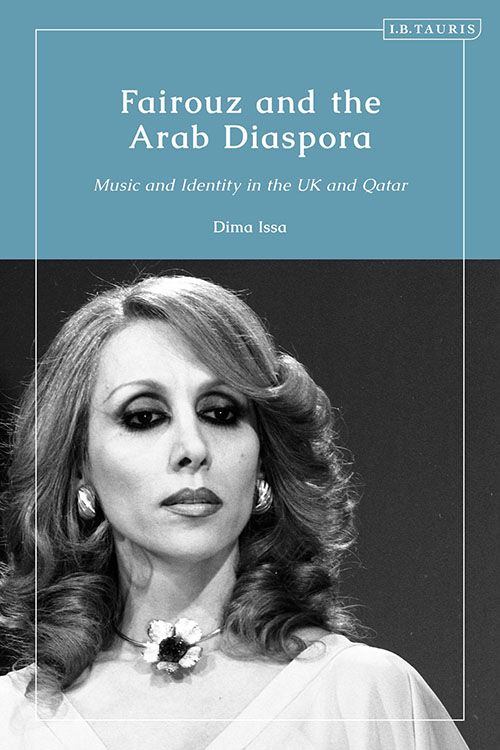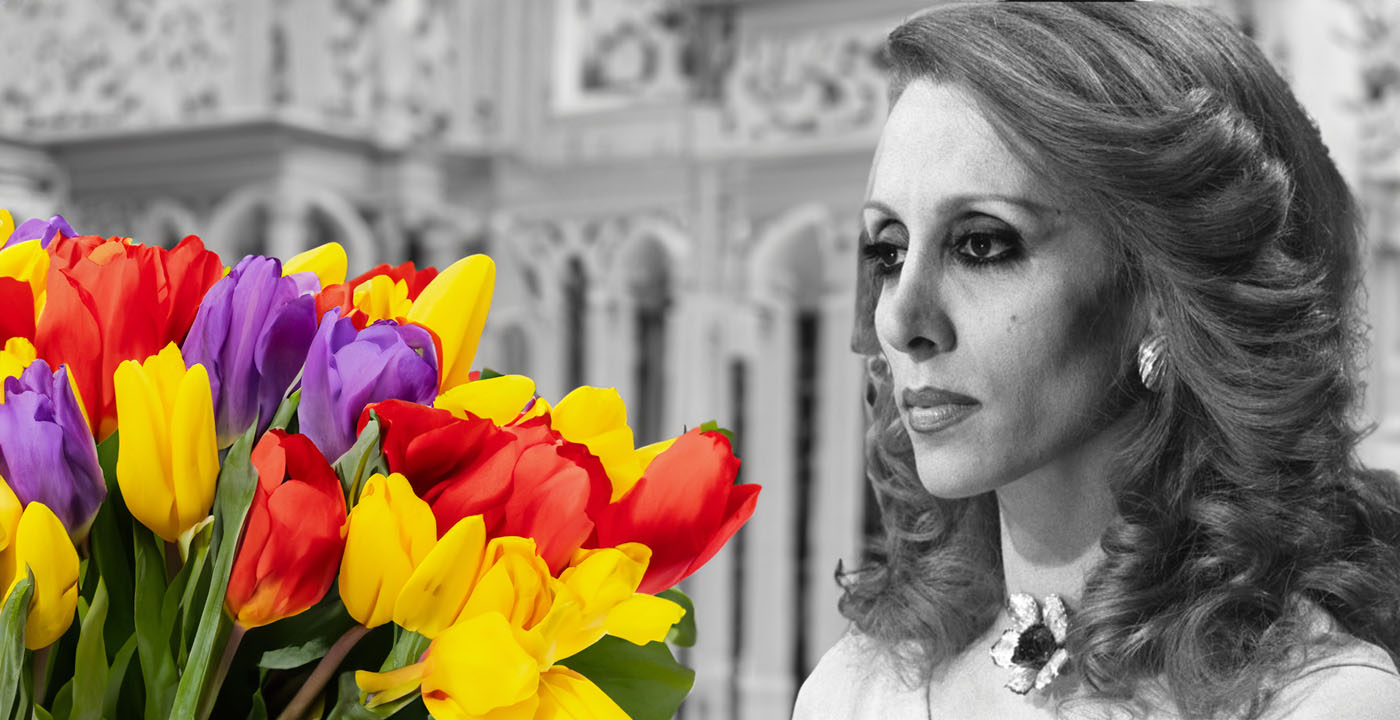No public intellectual has an aura like Fairouz’s. With over 1,000 songs, 20 musicals and three motion pictures, the singer continues to shape politics, lives and attitudes towards “home” in the Arab diaspora. An exclusive excerpt from Dima Issa’s new book.
Dima Issa
Amidst the tumultuous waves of events across the Arab world since January 2011, and bearing in mind attitudes towards Arabs in the Western world since September 11, 2001 (and arguably before), Fairouz could not be more significant. Through her songs, Fairouz offers her listeners a space in which to engage, reflecting on the past but making a room for the present and future. In the depths of a crumbling economy, a fraudulent government and a global pandemic, a bomb destroyed the Port of Beirut in Lebanon on August 4, 2020. Estimated to be the equivalent of 1,000 to 1,500 tons of TNT — a tenth of the power of the atomic bomb dropped on Hiroshima — the explosion killed hundreds, displaced thousands and badly damage buildings, homes and property within its six-mile radius. The country went into mourning. Making matters worse, the Lebanese government took no responsibility, or even commented on the atrocity, sparking further anger and frustration among an already exhausted population.

Weeks after the blast, French president Emmanuel Macron paid a visit to Lebanon. His first official visit was to Fairouz’s home, where he awarded the singer with the French Legion of Honor, the highest of awards. The visit was seen as symbolic, a nostalgic appraisal of the Lebanon she had sung for and about all her life. A hopeful, idyllic and romanticized Lebanon, a stark contrast to the Lebanon of today, which was corrupt, broken and filled with despair. More importantly, the award showcased the strength of Fairouz, her emblematic position, which she stood for and what she meant, not just for Lebanon but also for her listeners across the world.
Placing the Arab diaspora of Doha and London at the forefront of this study, I investigate the role Fairouz’s music plays in their lives while simultaneously shedding light on the circumstances shaping their diaspora experiences.
•
Since the late 1990s, Qatar and its capital Doha have witnessed a number of structural, economic and social political changes that have transformed the once flat, sandy landscape into state-of-the-art skyscrapers and glistening buildings. Perhaps representative of the rapid transformations taking place across the small peninsula is the Lebanese school in Doha, a modern building erected on what was once a barren desert. Among the chatter, the heavy footsteps and the sleepy faces, Fairouz’s voice is heard over the school’s outdoor speakers, welcoming students and parents every morning.
This initiative was executed by Mona, 45, a concerned parent, who, after dropping off her children at school one day, saw two men in a heated argument over Lebanese politics in the parking lot, “I got in my car and I started listening to Fairouz. I thought to myself, ouf, if they listen to her, I’m sure they wouldn’t disagree,” she says earnestly.
Later that afternoon Mona wrote an email to Walid, the headmaster of the school, explaining the situation she saw earlier, and she proposed a solution — play Fairouz while parents are dropping off their children from 7 to 7:30 a.m.
Walid was quick to accept, for him it was an opportunity to “preserve Lebanese heritage” in a globalize environment that he thought was pushing the younger generation to diverge from “Arab culture and the Arabic language.” This idea of reminding parents and children of Fairouz, and what she stands for, is in itself a form of identity construction that Walid and Mona not only wanted to be a part of but also were keen to share with others within their sphere of influence. By consciously choosing to play Fairouz’s songs, Mona and Walid set out to build a strategically effective space to encourage “Arabness” and political understanding, but also to compensate for any shortcomings in achieving either objective.
Drawing … on Walter Benjamin’s notion of “aura’ is significant in order to understand how “figuring and refiguring” can occur in different geopolitical circumstances. In The Work of Art in the Age of Mechanical Reproduction (1936), Benjamin argues that the evolution of technology has resulted in the loss of “aura,” since artworks are no longer seen in their physical and temporal entirety. For Benjamin, removing art from its place in space and time devalues its “aura.”
However, in the context of Fairouz, her “aura” takes on different forms and is strengthened among the diasporic community across borders and generations. As a “figure,” Fairouz transforms accordingly. For example, when asked what Fairouz means to her in London, Helene, 52, a Lebanese woman who has lived there for “around 24 years” responded: “that I’m far … far from the Lebanon that I know. Far away from the mood and ambience that I’m used to…” Helene’s statement shows how Fairouz’s “aura” manipulates according to different “individual histories” and social situations to take on deep-seated and discursive meanings.
Unlike the piece of artwork that Benjamin argues needs to be appreciated in a certain temporal and spatial atmosphere to ensure its full “aura” is attained, Fairouz herself produces this “aura.” She is at once an experience to be appreciated and also one who enhances the experience, “even if she wasn’t present in her voice, the air in Lebanon contains Fairouz in it,” she has both integrated into space and is a primary conductor of it. Fairouz is thus found in “Syria,” “Lebanon,” “Kuwait,” “Abu Dhabi” and “in the background of every restaurant, every taxi ride.”
Fairouz is associated with home, with land, with countries and with a region. She is borderless, yet she simultaneously erects the mnemonic affective borders of time and space. “She’s part of all of us,” an intrinsically specific, yet generally inclusive, form of identity, one which is determined in space and upbringing, since “Fairouz has been in all Lebanese homes for a very long time,” but also “She’s all over, ya3ni, in all my memories Fairouz is there. She’s everywhere.” Participants in these examples show how Fairouz not only provides the soundtrack to mnemonic space but also how she is embedded in the personal space of the individual and the collective.
Fairouz takes on an immersive role … She exists, with or without participants, as Ayman, 34, Syrian, living in London, states, “I came to Fairouz’s era rather than Fairouz coming to mine …” This further enhances the notion of Fairouz’s omnipresence and immortality among her listeners …” Fairouz thus occupies a prenatal, parental and postnatal space, straddling the gap between childhood and adulthood …
In his book The Suffering of the Immigrant (2004), Abdelmalek Sayad argues, “immigration results in a presence, and emigration finds expression in an absence. A presence makes itself felt; an absence is noted. A presence can be adjusted, regulated, controlled and managed. An absence is masked, compensated for and denied.” Via Fairouz’s music, respondents were able to vocalize their situations between the two states.
For Carmen, a Palestinian, “absence “and “presence” take on a very different meaning, as do notions of “place” and “space.” Carmen, in Doha, is reminded of “place” through Fairouz’s songs. During an emotional interview at a Doha coffee shop, Carmen recalls listening to Fairouz’s songs about Jerusalem, and “there isn’t a time I listen to it when I don’t cry.” Fairouz brings her back to “the roads of Jerusalem, the churches, how our life was,” to a “place” active in her mnemonic imagination. Carmen’s emotional response to place is one she feels is specific to her and other Palestinians, since “any person who listens to the songs of Jerusalem and stuff might not feel sad … but for us it is.” Here, affect is manifested in absence, but it is absence not only of the individual, but of the “place” itself. Carmen’s “us” is inclusive of those who feel that “absence” and displacement. With the Israeli occupation of Palestinian land, the continuous demolition of homes, physical and emotional violence, and Israeli settlers moving into Palestinian properties, Carmen is unable to return to Palestine.
In discussion with participants, many referred to “baytuna”/ “bayti,” our/my home, or “baladna”/ “baladi,” our/my country, or “watanna”/ “watani”, our/my nation, or even “dayi’tna”/ “day’ti,” our/my village. Those were mainly talked about in the past tense, “kan,” from the perspective of living in “Al-ghurba” [as a foreigner or outsider]. As Mahmoud Darwish writes In the Presence of Absence, (2011), “homeland is not always daylight and exile is not night …”
“Listening to Fairouz in ‘Al-ghurba’ means so so so much more to you,” says Amar, 39, Lebanese, in Doha. It is a “more emotional” experience, often resulting in “haneen,” a word similarto the Welsh word “hiraeth,” roughly translated as “homesickness” or “nostalgia,” or to a “state of missing/craving/yearning …
Fairouz … is both instigator and cure for “haneen,” which is, paradoxically, mutually exclusive, but also deeply symbiotic with being in a state of “Al-ghurba.”
* Names of all participants and interviewees in the study have been changed and their voices appear in italics in the above essay, excerpted from Fairouz and the Arab Diaspora: Music and Identity in the UK and Qatar, by Dima Issa, published by I.B. Tauris/Bloomsbury Publishing.
** Special for TMR readers: Order the book online direct from Bloomsbury with this code, GLR TW5, and receive 35% off.




